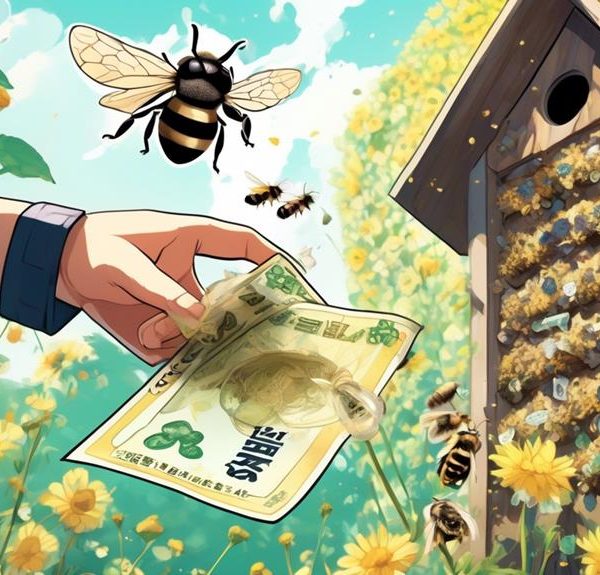Journey into the feasibility of crafting a sustainable mason bee hive from resilient redwood; discover this unique intersection of entomology and carpentry.
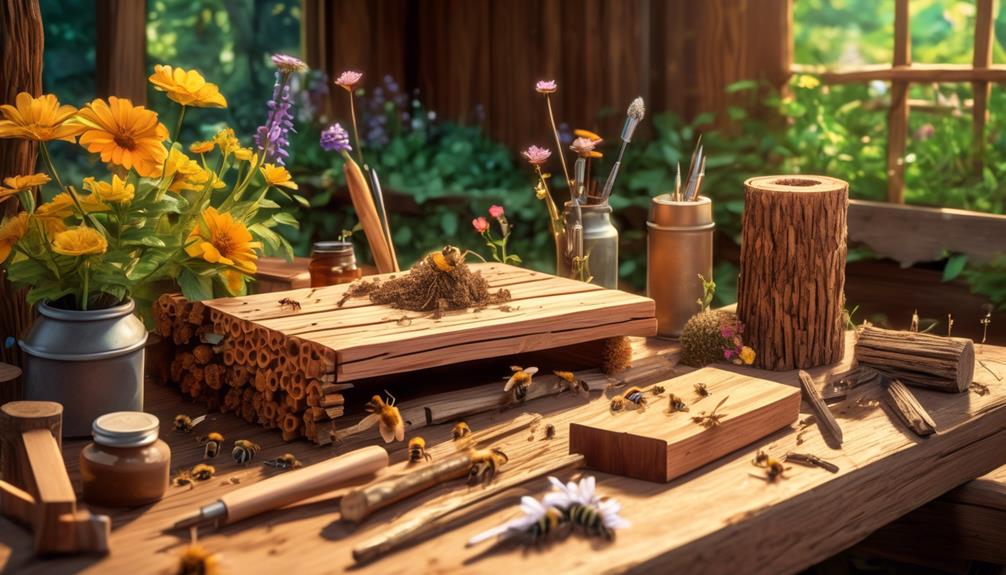
Can I Make a Mason Bee Hive Out of Redwood?
Imagine you're strolling through a forest of towering redwoods, their lofty heights a testament to nature's enduring strength. You're curious about these resilient trees, specifically, the potential use of their wood in creating a mason bee hive. Can redwood, with its impressive durability and resistance to decay, provide a suitable home for these industrious creatures?
Mason bees, unlike honey bees, are solitary and don't produce honey, but they're among the most effective pollinators nature has to offer. Creating a hive for them using redwood could be a unique and sustainable project. But you're left wondering, is it a feasible idea?
As you navigate this interesting crossroads of entomology and carpentry, there's a wealth of information waiting to guide your journey.
Key Takeaways
- Mason bees are superior pollinators and building a redwood mason bee hive can support their population and enhance pollination.
- Redwood is a durable and long-lasting material that provides a secure and comfortable home for multiple generations of bees.
- Redwood is environmentally friendly as it is a renewable resource and harvested responsibly, contributing to the overall health and diversity of the local ecosystem.
- Regular maintenance and care are crucial to extend the lifespan of the redwood hive and ensure the health of the bees, including treating the wood, using sharp tools, and performing regular checks and cleaning.
Understanding Mason Bees
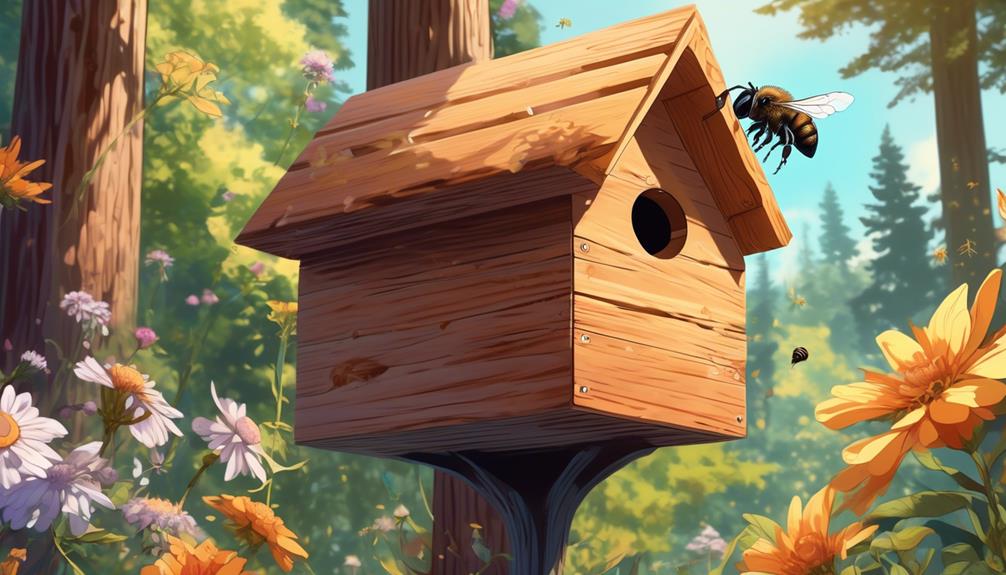
Before you start building your redwood mason bee hive, it's essential to understand that these tiny creatures, unlike honeybees, are solitary insects, each female building and providing for her own nest without the help of a hive community. These little heroes are solitary pollinators, meaning they don't live in colonies like their honeybee counterparts. Instead, each female mason bee constructs her own nest in a tube-like structure, provisions it with food, and lays her eggs.
Mason bees, named for the masonry-like mud partitions they build between their brood cells, are non-aggressive and very rarely sting. They're also superior pollinators. While honeybees tend to be picky, focusing on one flower type at a time, mason bees flit from flower to flower, spreading pollen more efficiently.
You'll also find that mason bees are quite hardy. They can tolerate colder conditions than honeybees and begin their pollination duties earlier in the spring. So, when you're building your mason bee hive, you're not just providing a home for these creatures—you're supporting a key player in your local ecosystem.
Why Choose Redwood?
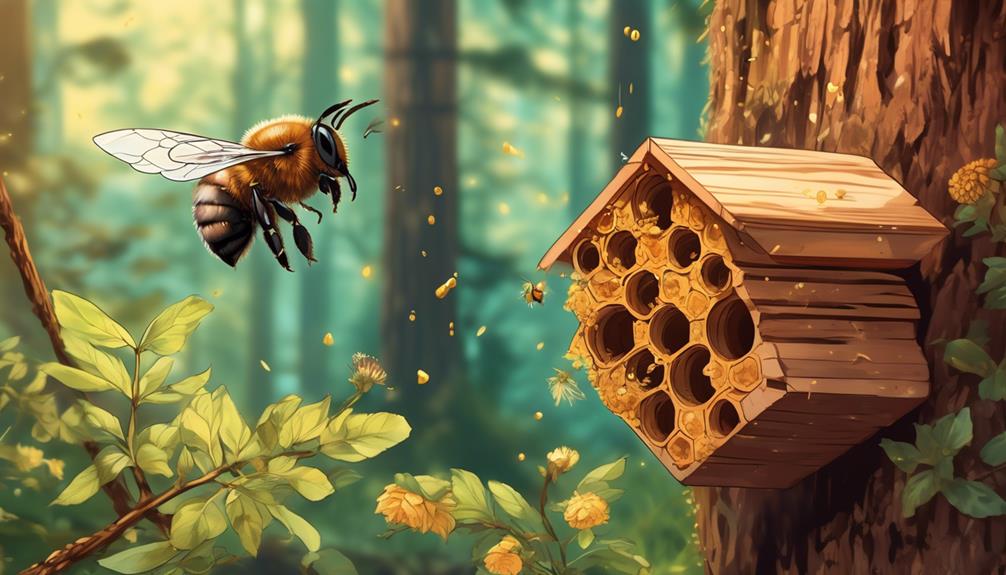
Now that you're acquainted with the resilience and unique habits of mason bees, let's explore why redwood stands out as the ideal material for constructing their hive. It's not just about aesthetics, although redwood's rich, warm hues are undeniably attractive. It's actually about practicality, durability, and sustainability.
Quality | Redwood Advantage | Benefit to Mason Bees |
|---|---|---|
Durability | Redwood is known for its resistance to decay and pests. | The hive will last longer, providing a secure home for several generations of bees. |
Insulation | Redwood has superior thermal insulation properties. | This keeps the hive's internal temperature stable, providing a comfortable environment for the bees. |
Sustainability | Redwood trees are a renewable resource and harvested responsibly. | Using redwood is environmentally friendly, supporting the overall health and diversity of your local ecosystem. |
Choosing redwood means you're investing in a hive that's built to last. The natural durability of redwood can withstand the elements, ensuring your mason bees have a safe, comfortable home for years to come. Plus, you're making an eco-conscious choice that benefits not just your bees, but the broader environment. So, when considering materials for your mason bee hive, it's clear that redwood is a standout choice.
Building a Redwood Mason Bee Hive
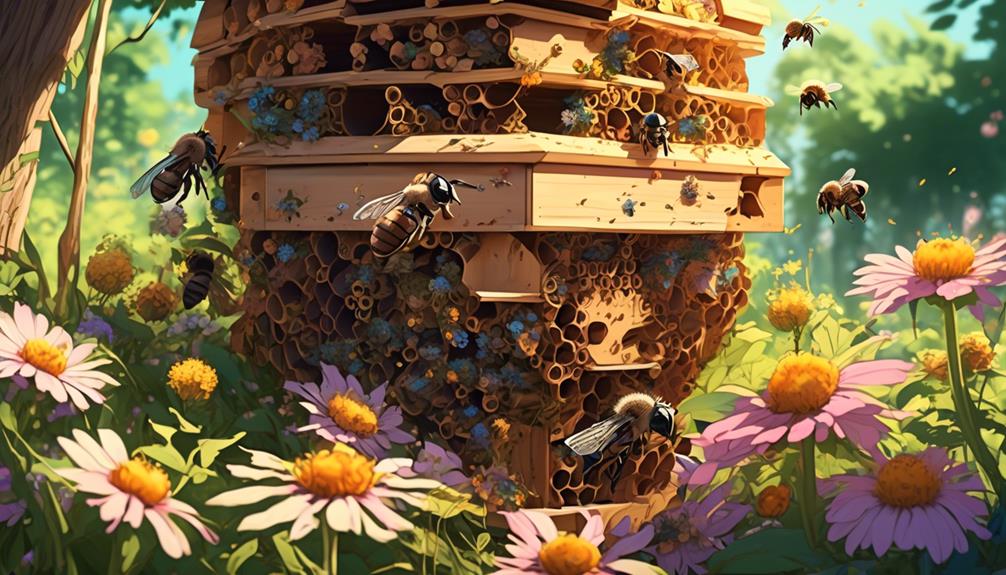
Diving into the construction process, it's essential to gather quality redwood and the necessary tools to create a sturdy, sustainable mason bee hive. You'll need redwood planks, a saw, drill, measuring tape, screws, and a level.
Start by cutting your redwood into pieces for the hive's structure. You'll need a base, sides, top, and plenty of small blocks for the bee's nesting holes. Measure and cut carefully, ensuring each piece fits together seamlessly. This precision not only improves the hive's durability but also provides a secure environment for the bees.
Next, assemble your hive. Screw the sides to the base, then add the top. Ensure everything is level for the bees' orientation. Now, it's time to create the nesting holes. Drill multiple holes into your small redwood blocks, each about 5/16' in diameter and 3-4' deep. Attach these blocks inside the hive.
Finally, place the hive in a suitable location. Mason bees prefer morning sunlight and protection from wind and predators.
Building your redwood mason bee hive is a rewarding project that contributes to the pollination and preservation of these vital insects.
Potential Challenges and Solutions
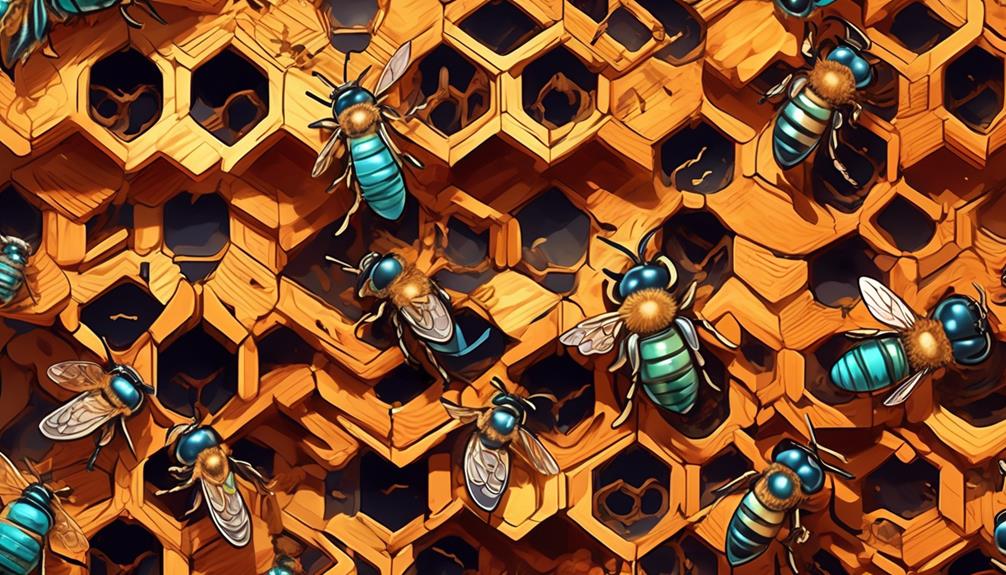
While the construction process of your redwood mason bee hive might seem straightforward, you're likely to encounter a few challenges along the way, and it's crucial to be prepared with effective solutions.
One potential hurdle is the redwood's susceptibility to dampness and decay. Although redwood is naturally rot-resistant, it's not completely invincible. Exposure to moisture can lead to wood rot, compromising the hive's structure. To counter this, consider treating the wood with a non-toxic water sealer. This doesn't harm the bees but extends the hive's lifespan.
Another challenge could be the wood's hardness. Redwood, though softer than many hardwoods, can still be tough to work with. Investing in sharp, high-quality tools can make your job easier and produce cleaner cuts, reducing the risk of splintering that could harm the bees.
Lastly, redwood's cost may be a deterrent. It's pricier than other woods, but its durability and aesthetic appeal make it worth the expenditure. If budget is a concern, look for reclaimed or salvaged redwood, which can be a cost-effective alternative.
Maintaining Your Redwood Hive
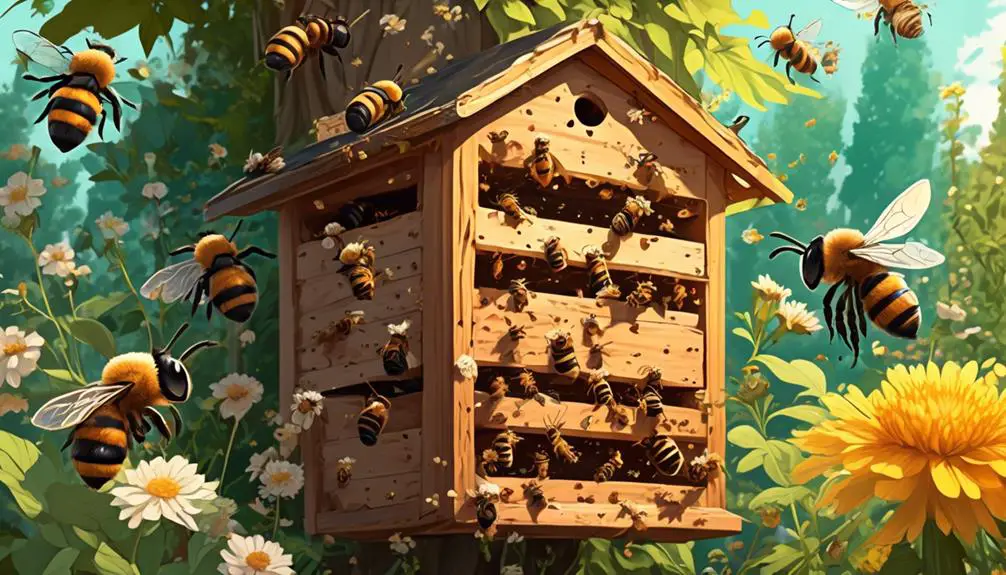
Once your redwood mason bee hive is successfully constructed, it's crucial to implement regular maintenance practices to ensure its longevity and the health of your bee population. You'll need to keep a close eye on the hive, checking for any signs of damage, mold, or pests.
Regular maintenance of your hive can be broken down into bi-weekly, monthly, and annual tasks. This can be best illustrated in the following table:
Frequency | Tasks |
|---|---|
Bi-weekly | Check for pests and damage |
Monthly | Clean and remove any mold |
Annually | Replace worn out parts |
Bi-weekly checks will help you spot any signs of pests or damage early on. If you find any, take immediate action to prevent further harm to your hive and its inhabitants.
Monthly, you should clean your hive, particularly looking out for mold. Mold can be detrimental to your bees, so it's important to remove it promptly.
Annually, assess the overall condition of your hive. Redwood is durable, but parts of your hive may still wear out over time. Replacement of these parts will keep your hive in optimal condition for your mason bees.
Conclusion
Absolutely, crafting a mason bee hive from redwood is doable and beneficial. Redwood's durability and resistance to rot make it an excellent choice.
However, remember to drill holes of appropriate sizes, and consider potential challenges such as predators and moisture. Regular maintenance is key to ensuring your hive's longevity.
So, roll up your sleeves and get started on creating a welcoming home for these valuable pollinators.

